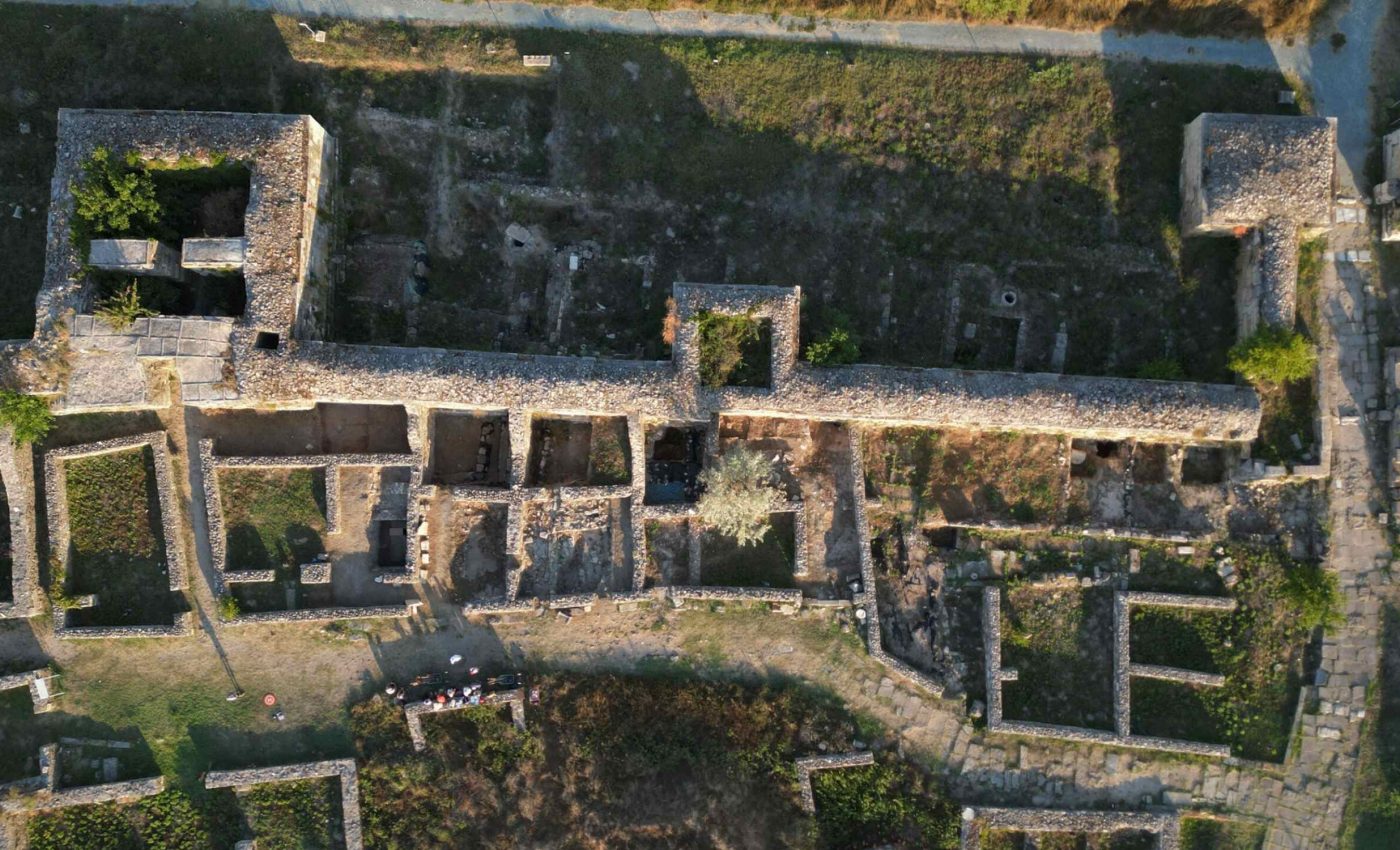
Archaeologists find chest full of Roman coins and precious jewelry
Dozens of Roman coins and a cluster of precious metal jewelry surfaced inside a burned Roman house at Histria.
The items fused together in the blaze and kept the outline of a wooden container – a strange imprint that looks like a ghost of the lost chest.
Histria is widely recognized as the oldest city in Romania, founded by colonists from Miletus in the 7th century BC.
Archaeologists recovered the fused cluster from a Roman domus, a townhouse, that burned in the second or third century AD. The field team lifted the compact mass and other finds for lab conservation and study.
Archaeologists determined that the ornaments and coins had been stored in a wooden box that burned in the fire, causing the metals to fuse together in the heat while preserving the outline of the container.
The melted cluster provides a rare glimpse into how valuable items were kept in Roman homes. The house itself showed clear signs of wealth, with limestone pavements and walls finished in painted plaster.
Researchers think the valuables belonged to a high status family of the period. That estimate comes from the setting, the quality of the finishes, and the range of objects found in the same layer.
Roman coins in Histria
The story of Histria stretches across Greek, Roman, and Byzantine times. Its location near the Black Sea and the Danube kept it active for more than a millennium.
Formal excavations began in 1914 under Vasile Pârvan and have continued to the present.
Work today involves several institutions in Romania, including the Vasile Pârvan Institute of Archaeology in Bucharest and partners in Constanța and Bucharest.
Histria’s long record matters for understanding urban life on the western Black Sea. It shows how a Greek colony adapted under Rome while keeping local habits.
Finds from streets, wells, and workshops let researchers trace patterns of trade, water use, and craft production. The new cache adds a private household layer to that public picture.
How archaeologists read a burned room
Archaeologists rely on stratigraphy, the study of layered deposits, to anchor events in time. In a burned room, layers of ash, collapsed masonry, and domestic debris can fall in a sequence that preserves the final moments before destruction.
Context is everything. If the hoard sits sealed beneath a thick fall of roof tiles and painted plaster, that placement argues the valuables were already in the house when the fire hit.
Dating the coins will support the timeline. Numismatics, the study of coins, uses emperors’ portraits and inscriptions to estimate mint years and circulation ranges.
A fused group like this can be hard to separate. Conservators may stabilize the mass first, then isolate coins and ornaments one by one for cleaning and reading.
What the chest imprint can tell us
The shape of the fused cluster suggests a small box tucked in a protected spot. That offers a practical lesson about storage areas and privacy inside a Roman domus.
If the chest sat near a wall or in a built niche, the team may find hardware or plaster details that match that use. Small nails, hinges, or lock fragments can back up the reading.
Metallurgical analysis of the jewelry can reveal alloys and techniques. Those clues point to workshops and trade routes that linked Histria to the wider Roman economy.
Patterns of wear on the coins can hint at how long they circulated before the fire. A mix of heavily worn and crisp coins would not be unusual in a household stash.
Principate label and Roman coins
The researchers link the house to the Principate, the early phase of the Roman Empire when emperors claimed to be first citizens. That label signals a time of relative stability in provincial towns like Histria.
A prosperous domus with painted walls and limestone floors fits that frame. Urban upgrades in this period often included paved streets, drains, and piped water.
Household finds from Histria already show a blend of imported luxuries and local goods. The hoard adds private wealth to that mix, a hint of savings, gifts, or inheritance.
If the set contains standardized types, that could speak to pay, prices, or taxation. Atypical pieces might reflect personal taste or heirlooms.
The mass and its companions now sit in the museum lab for cleaning, conservation, and documentation. Specialists will decide how to stabilize the fused blocks and what to sample for analysis.
Classification within Romania’s National Cultural Heritage as a Treasury category piece is expected, based on the find’s qualities and context.
Public display will follow after the lab work concludes. For now, it gives a tight, human scale view into a room that burned almost 1,900 years ago.
—–
Like what you read? Subscribe to our newsletter for engaging articles, exclusive content, and the latest updates.
Check us out on EarthSnap, a free app brought to you by Eric Ralls and Earth.com.
—–













